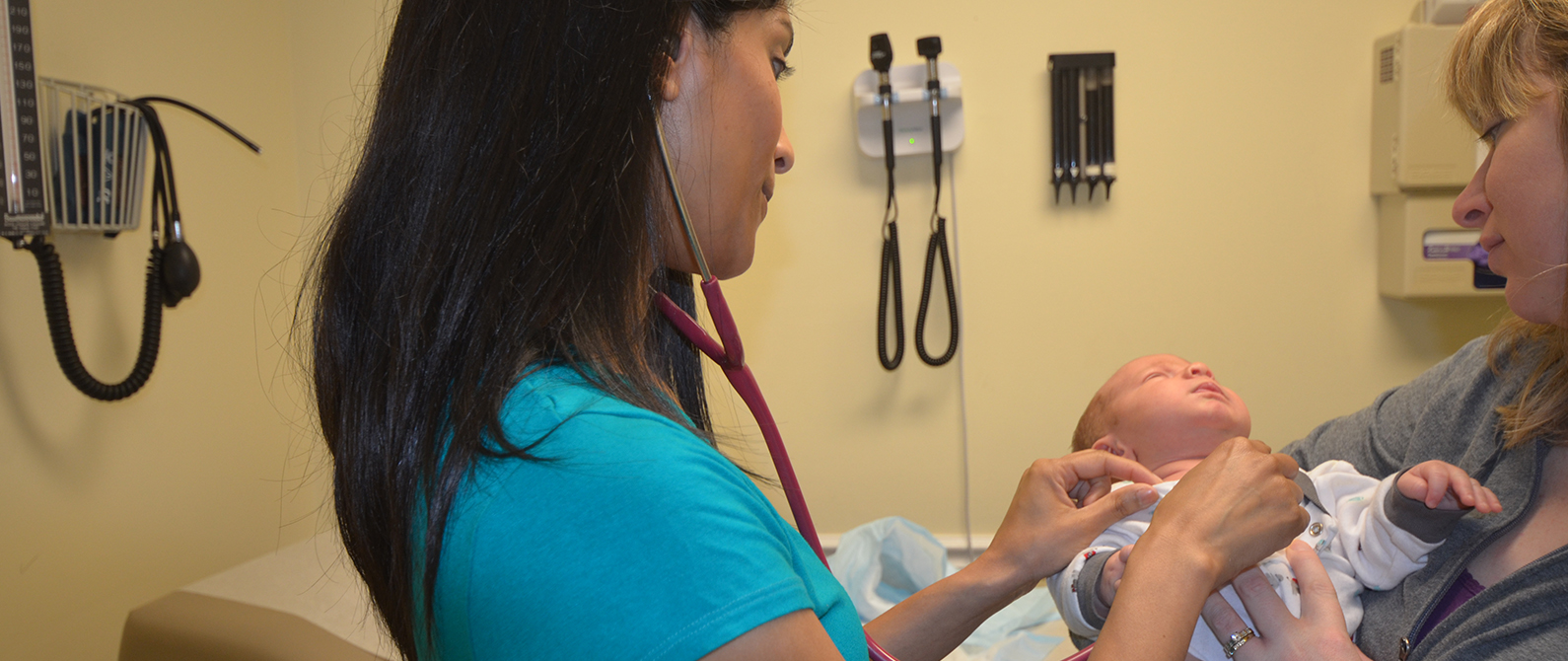Pediatric Immunizations
Why We Give Immunizations
Immunizations are given to keep your child healthy and prevent disease. Vaccines are targeted at illnesses caused by infections that carry a significant risk of serious complications and, in many cases, death. Vaccines save lives.

How Immunizations Work
Vaccines are made up of components of specific viruses and bacteria. Sometimes proteins or sugars from the outer surface, and other times killed or weakened viruses. In any case, the materials in the vaccine are designed to stimulate your child’s immune system to make antibodies to the bacteria or virus in question and to “remember” that infection in the future. Most pediatric immunizations require more than one dose to get the best protection.
Vaccine Safety
There is thorough and on-going safety monitoring with all vaccines that your child receives. Each vaccine undergoes years of clinical trials to evaluate its safety and effectiveness before it makes it to the market. Panels of experts carefully study these trials before recommending if and when these pediatric immunizations become a part of your child’s routine immunization schedule. After vaccines are released, they are continuously monitored for unexpected side effects. Pediatricians are required to report any serious or unusual events after immunizations through VAERS (Vaccine Adverse Event Reporting System).
Common Immunization Side Effects
No medication or test is without risks and benefits. By far the most common side effects of vaccinations are redness and pain at the injection site and fever. These usually develop shortly after the pediatric immunizations are given and go away on their own in 1-3 days. Children might feel more tired than normal or be crabby for a couple of days afterwards. Sometimes children will develop a knot under the skin where a shot was given that takes weeks to completely disappear. The MMR and chicken pox vaccines may cause rash and/or fever that starts 1-2 weeks after the vaccine. You should receive information sheets for each vaccine your child is given that will explain both the disease and the side effects of the pediatric immunization.
If your child is uncomfortable after their immunizations, you may apply cool compresses to the injection site or give over the counter fever reducers to help relieve these symptoms. If symptoms do not go away within 72 hours of when your child received their immunizations or if you are concerned, call our office for an appointment.
Immunization Myths
- Vaccines cause autism. Multiple large, well run studies have looked at this, including one study of over 500,000 children. None of these studies has shown any link between autism and vaccines. Vaccines do NOT cause autism.
- The MMR vaccine causes autism. This fear is based on a single study with only 12 children. Ten of the original 13 authors of this study have since withdrawn their name from the study, and the journal in which it was published has issued a retraction. The lead investigator of this study had his medical license revoked. Repeated studies since that time have shown no link. Vaccines do NOT cause autism.
- Vaccines overwhelm the immune system. Every day since birth, your child’s immune system has mounted a response to the trillions of bacteria that live on his skin, mouth, nose, throat and GI tract. If he could not control these bacteria, he would quickly die of overwhelming infection. The 14 vaccines routinely given to children barely scratch the surface of the immune system’s abilities.
- It is better to give vaccines separately. There is no physiologic reason to separate or delay vaccines. The American Academy of Pediatrics immunization schedule has been thoroughly reviewed by experts, most of whom are also parents. Delaying vaccines leaves your child vulnerable longer, and separating vaccines often results in more pokes and higher amounts of vaccine preservatives.
- Avoiding vaccines altogether is safer. Young children are immunized because they are often at highest risk for serious complications or death from infection. To delay an immunization is to delay protection and risk infection.
- These diseases are gone, so vaccines are no longer necessary. As immunization rates drop, the diseases return. This has been seen again and again in measles outbreaks in the US and even a case of polio in New York. The affected children were all inadequately immunized. If immunization rates continue to decline, it is inevitable that we will see a rise in vaccine-preventable illnesses.
Risk of not immunizing
Many parent groups and internet sites have emphasized the risk, often using erroneous information, of immunizing. There are well defined risks of choosing not to immunize your child. The diseases we vaccinate against have serious complications, and many can be fatal. When parents choose not to vaccinate their children according to established guidelines, they put their children at risk for life threatening infections and put the general public at risk for outbreaks of vaccine preventable illnesses.

